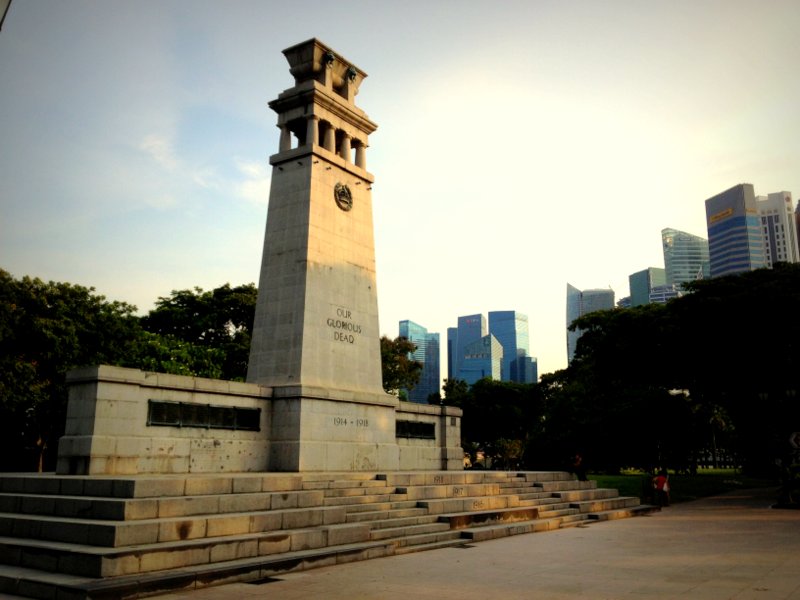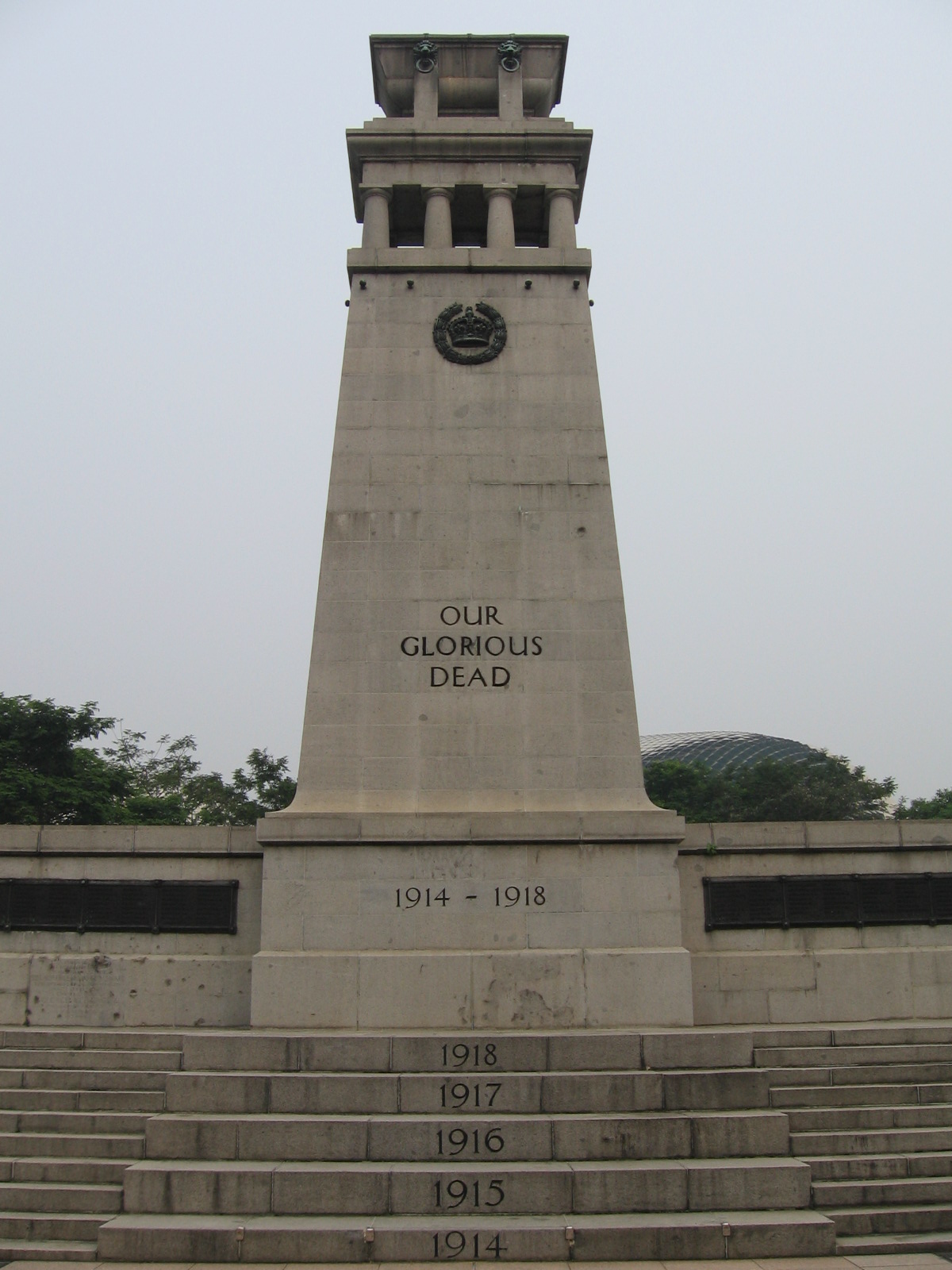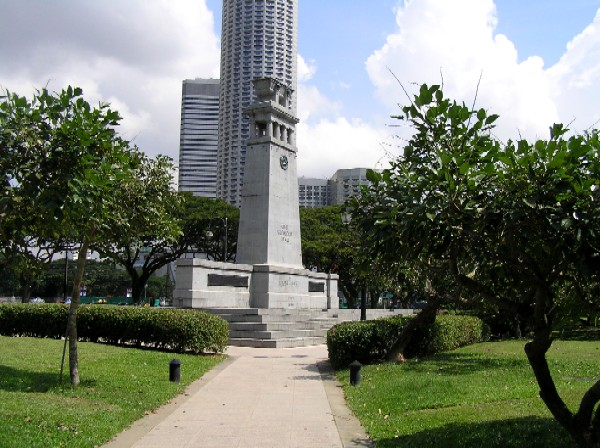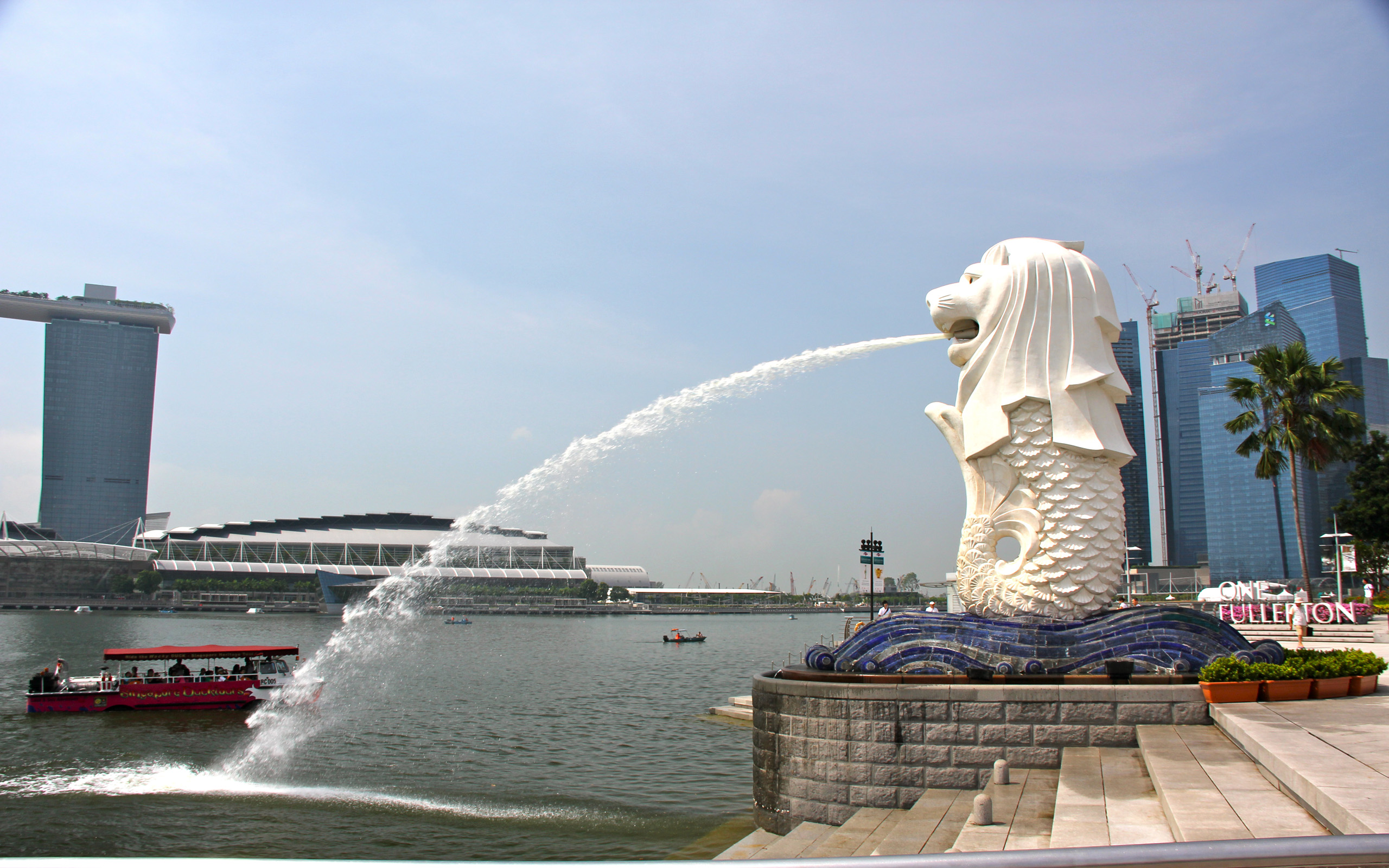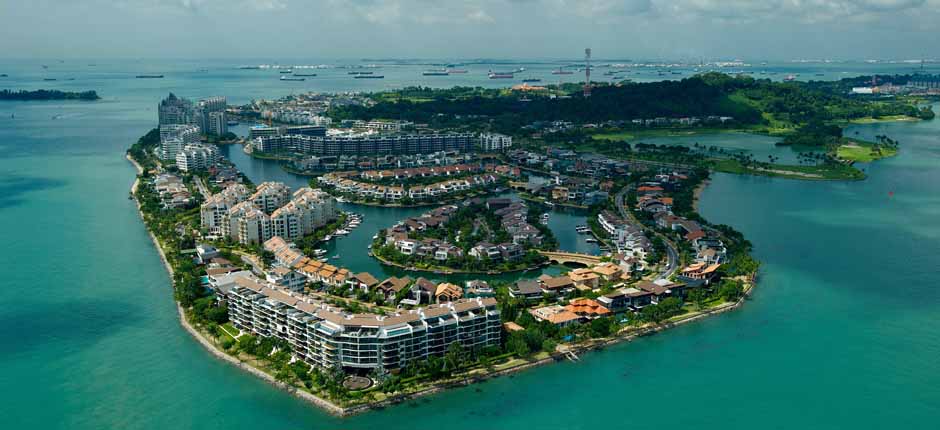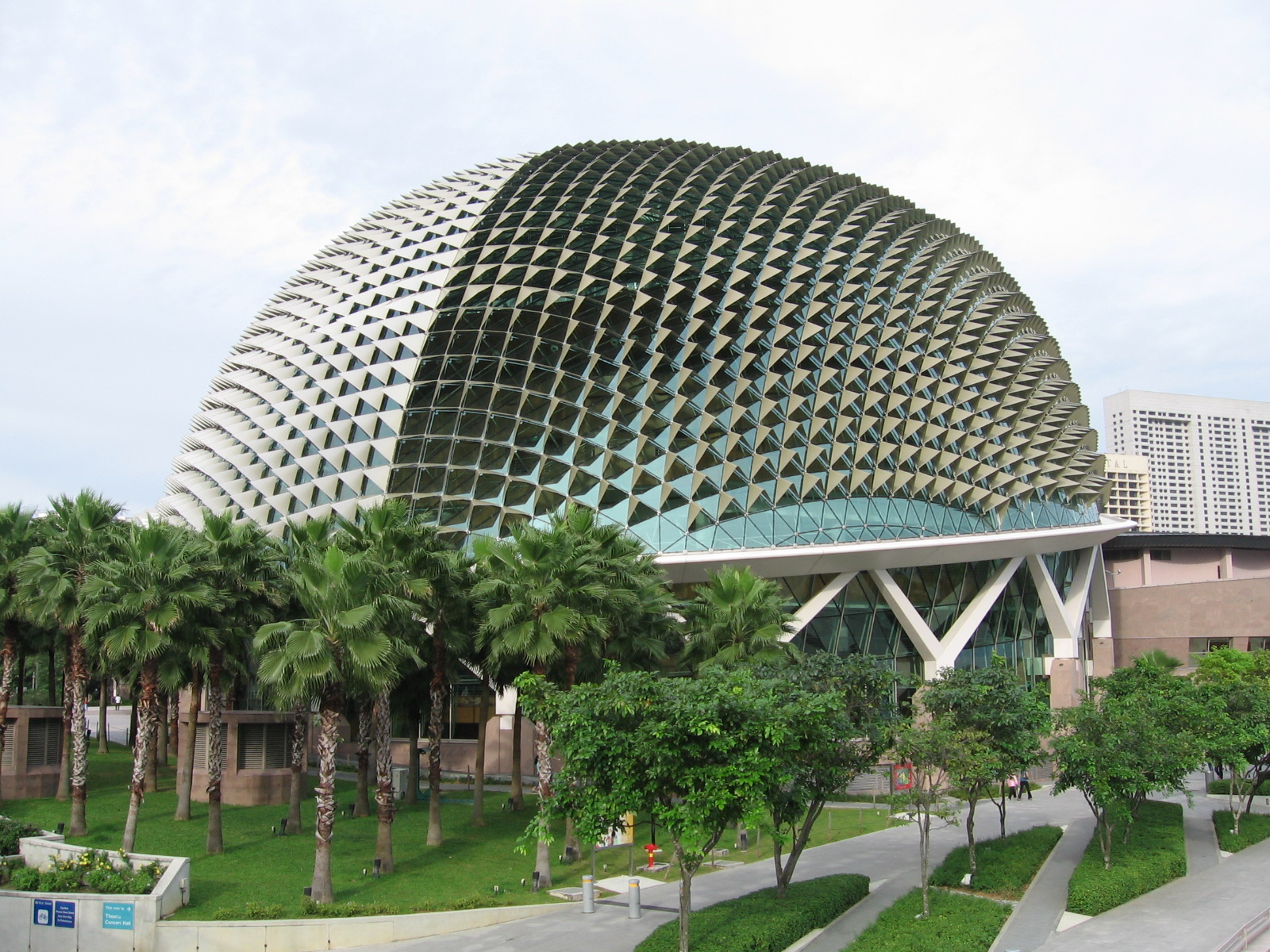Singapore /Singapore /Singapore
Sight Address : Esplanade Park, Singapore, Singapore (Downtown Core).Edit
Detail InformationEdit
The Cenotaph (Chinese: 战亡纪念碑) is a war memorial located within the Esplanade Park at Connaught Drive, within the Central Area in Singapore’s central business district.The Cenotaph, located at Esplanade Park along Connaught Drive, is a war memorial which commemorates the sacrifice of the men who perished during World War I and World War II. It was unveiled on 31 March 1922 by the Prince of Wales. On 28 December 2010, it was gazetted as a national monument together with two other structures in Esplanade Park, the Lim Bo Seng Memorial and the Tan Kim Seng Fountain.The Cenotaph is made of local granite and is nearly 60ft high. Bronze tablets on the Cenotaph bear the names of the men who perished in World War I. The original five steps that lead up to the monument bear the dates 1914, 1915, 1916, 1917 and 1918, marking the war years. Crowning the structure is a sarcophagus with a bronze lion beneath a bronze medallion consisting of a laurel wreath of victory enclosing a crown. It symbolises the crown to which these men had rallied and is also a reflection of the Crown Colony. Lower down is the inscription “The Glorious Dead” and below the inscription are the dates 1914-1918. On the reverse side, though no names are listed to commemorate the World War II casualties, the phrase “They died so we might live” is inscribed in the four official languages, English, Malay, Chinese and Tamil. The extended steps that were added in 1951 bear the war years 1939 to 1945 in succession. There are 14 pylons on both sides of the stone structure showing the names of famous battles, with each battle surmounted by a laurel wreath. Overall, it is a simple granite structure wrought with just a hammer and a chisel.
HistoryEdit
The Cenotaph was first erected as a memorial in honour of the 124 men from Singapore who died in action during World War I. It was designed by architect Denis Santry of Swan & Maclaren and was modelled after the Whitehall Cenotaph in London, England. The foundation stone was laid on 15 November 1920 by Sir Lawrence Nunns Guillemard, Governor of the Straits Settlements, in the presence of M. Georges Clemenceau, Premier of France, as well as Major-General Sir D.H. Ridout, the General Officer Commanding the Troops, Straits Settlements. The memorial was unveiled on 31 March 1922 in a solemn ceremony by the Prince of Wales (later Duke of Windsor and King Edward VIII) during his tour of Malaya, India, Australia and New Zealand.In 1950, the government approved an extension to the base of the structure to commemorate those who died during World War II. The extension was completed in 1951.The Cenotaph was built in memory of the 124 British soldiers born or resident in Singapore who gave their lives in World War I (1914–1918), with a second dedication (but no names) added in remembrance of those who died in World War II (1941–1945).The structure was designed by Denis Santry of Swan and Maclaren. The foundation stone was laid by Sir Lawrence Nunns Guillemard, the Governor of the Straits Settlements, on 15 November 1920. In attendance was the visiting French Premier, George Clemenceau who was the French Minister of War from 1917 to 1919.The memorial was completed in 1922, and was unveiled on 31 March that year by the young Prince Edward of Wales, later Duke of Windsor and King Edward VIII, during his Asia-Pacific tour. During the unveiling ceremony, a chaplain blessed the Cenotaph with the words, “The stone is well laid and truly laid to the Glory of God and the memory of the illustrious dead.” Against the backdrop of the sea then fronting Queen Elizabeth Walk, Governor Guillemard awarded medals of courage to those who had served in the war.In Prince Edward’s entourage was Louis Mountbatten. At the end of World War II, Mountbatten returned to Singapore as the Supreme Commander of the South East Asia Command to receive the surrender of the Japanese at City Hall on 12 September 1945.
Must SeeEdit
Attraction
Visiting TimeEdit
10 am -11 pm
Closed OnEdit
N.A.
Best Season to VisitEdit
June to July and November to December.
Best Time To VisitEdit
N.A.
Time Required for SightseeingEdit
N.A.
Ticket Required : No Edit
Individual National Adult : N.A.
Kids : N.A.
Individual Foreigner Adult : N.A.
Kids : N.A.
Still Photo Camera : N.A.
Video Camera : N.A.
Guide Required : No Edit
Approximate cost: N.A.
Dress Code (If Any) : No Edit
Dress Require: N.A.
Restaurants NearbyAdd / Edit
How to ReachEdit
Taxi : Taxis are generally very hard to get during peak hours (Mon-Fri 7:00am – 9:30am and Mon-Sat 5:00pm – 8:00pm) and on rainy days. If you are at a hotel, have conceirge call you a taxi. If you are out about town and have access to a cell phone- calling for a taxi will cut your wait time by 20 to 30 minutes. All taxis are fitted with meters; all are air conditioned; the majority of the taxis are 5-seaters; about 90% of taxis have radiophones; call booking is done via GPS or digital voice dispatch. All passengers must fasten their seat belts by law.
For taxi Booking fee is SGD $2.3. Minimum fare for taxi is SGD $3 for first 1Km. Fare above minimum fare until 10Km is SGD $0.55 per Km. Fare above 10Km is charge SGD $0.628 per Km. Taxi Waiting charges per hour is SGD $17.6. Peak Hours charges is diffrent.
Bus : Public buses run daily from 5.30am to midnight. Extended night services cost slightly more (a flat rate ranging from $1.50-$3.00). Otherwise, most fares depend on distance travelled and range from 67 cents to $1.58 for air-conditioned comfort (almost all public buses in Singapore have air-conditioning today). There are also “feeder” bus services that charge a flat rate of 67 cents. Each bus should not take more than 15 to 20 minutes to arrive at the bus stop.
Train : Singapore MRT system is very well connected to different parts of Singapore and very clean! If you have the time and plan to explore around little Sunny island, get the the Singapore Tourist Pass!
It runs 6am-12mn, fares start at S$1 (70cents in EZ link). Tickets can be purchased in all MRT stations. You just have to insert your money through the ticket machine. Rush hour’s usually 7am-9am, 11am-2pm and 4pm-7pm.
Air : Changi Airport is the country’s main airport. From the airport there are a number of ways to get into the city:
Taxi is easiest – simply follow the signs after clearing customs. Meters are always used in Singapore and prices are reasonable. A trip to the city during the day will be between $20-$30 including $3-5 airport surcharge. An additional 50% surcharge applies between midnight and 06:00.
Limousines charge a flat $50 to anywhere in the city and are a pretty good deal after midnight, as you can skip the queue and avoid the surcharge. The same pricing applies to chartering van-sized MaxiCabs, which are good for large families or if you have lots of baggage.
Shuttle – Shared six-seater MaxiCab shuttle service to designated areas/hotels costs $7 and can be booked in advance or in the arrivals hall. 6AM-2AM, every 15-30 min.
Subway – MRT trains run from a station between T2 and T3, but you’ll need to change trains at Tanah Merah to a city-bound train: just exit through the left hand side door and cross the platform. The 30 min ride to City Hall station costs $1.90 plus a refundable $1 deposit, and trains run 05:31-23:18.
Bus – Bus terminals can be found in the basements of T1, T2 and T3. 06:00-23:59 only. Fares are less than $2.00, exact fare required (no change given) if you pay cash.
Others : N.A.
Things to CarryEdit
Safety / WarningEdit
- Please be advised that all bags and personal items are subject to inspection.
HelplineEdit
- Police: 999
- Emergencies/Ambulance/Fire Brigade: 999
- Police Hotline: 1800 353 0000
- Non-emergency ambulance: 1777
- Flight Information (24-hours): 1800-542 4422
- Tourism Information (24-hours): 1800-736 2000
